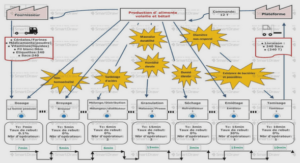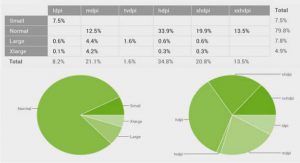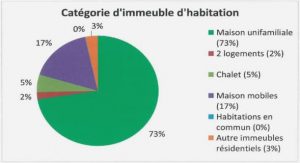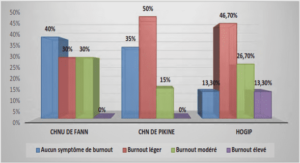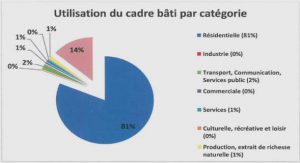Télécharger le fichier original (Mémoire de fin d’études)
Gamma ray and neutron spectroscopy principles
Gamma rays and neutrons
Gamma rays were discovered by Paul Villard, a French chemist and physicist, in 1900. Gamma rays are the electromagnetic radiations having the highest energy (above 100 keV) in the electromagnetic spectrum. X-rays overlap the energy range of gamma rays. The distinction between the two terms depends on the source of the radiation, not its wavelength. X-ray photons are generated by excitation and ejection of atomic electrons, gamma rays by excitation of atomic nuclei, including dissociation, or matter-antimatter annihilation.
Neutrons are subatomic particles with no electric charge and a slightly larger mass than that of a proton. Neutrons are usually found in atomic nuclei, where they can be stable. When unbound to nuclei, neutrons are unstable. A neutron decays by β radioactivity into a proton, an electron and an electron antineutrino. The neutron lifetime is about 15 minutes (885.7 ± 0.8 s). Because free neutrons are unstable, they can only be obtained from nuclear reactions (spontaneous disintegration or caused by bombardment with high energy particles).
Neutron sources in planetary materials
In a planetary context, the main source of neutrons is the interaction between galactic cosmic rays (GCR) and the nuclear constituents of the surface material. GCR are high energy (typically ranging between 0.1 and 10 GeV) ions that penetrate the solar system. They mainly consist of protons (about 87%), but also of about 12% alpha particles, and about 1% heavier nuclei.
When they encounter a solid body, GCR particles begin to lose their energy through initiation of intra-nuclear cascades [Bertini, 1969]. Cosmic rays particle and planetary nuclei are subsequently transformed in a variety of secondary nucleons, mesons and residual nuclei. These secondary particles continue to lose energy, through initiation of further cascades, decay or Coulomb collisions. The resulting population of particles with energies below 100 MeV is dominated by neutrons. Neutrons newly created have rather high energies, and are referred to as fast neutrons.
Neutrons can be produced with two main mechanisms: direct interactions and evaporation from excited nuclei. Direct interactions (or spallation collisions) produce neutrons with a continuum of energies extending up to that of the incident cosmic ray. Neutron evaporations produce a Maxwellian energy spectrum whose average is about 1 MeV [Feldman et al., 1993]. Secondary neutrons can either moderate in the surrounding material or escape to space. They can undergo multiple elastic and non-elastic collisions with the nuclei of the material. The resultant neutron spectrum below 10 keV has two different regimes: epithermal and thermal (Figure 1.1).
The epithermal range of energies is below the energies at which neutrons are produced with the spallation or evaporation processes (which is known as the fast range). It is also above the energies where neutrons are scattered by ion thermal motion or lost by absorption (which is known as the thermal range). The resulting energy subdivision is roughly the following: thermal energies are below ∼0.1 eV, epithermal energies range between ∼0.1 and ∼1000 eV, fast energies are above ∼1000 eV.
Gamma ray sources in planetary materials
Gamma ray production in planetary materials can be due to natural or induced radioactivity. The first phenomenon consists in the deexcitation of radionuclides whose half-life is about the same as the age of the solar system. The second phenomenon consists in the interactions of secondary particles created by the energetic particles bombardment (either of solar or galactic cosmic ray origin) with nuclei of the surrounding planetary material.
GCR produced neutrons are the major source of gamma rays. Nuclei can be excited directly by cosmic-ray particles, by inelastic scattering and capture of neutrons, or in the decay of radioactive nuclei. The excited levels in each nucleus occur at specific quantized energies, and the energy of a gamma ray made by a transition between nuclear levels can usually identify which nucleus produced it.
The isotopes that have half-lives long enough to allow observing their decay nowadays include: 40K (half-life of 1.25 Ga), isotopes in the decay chains of 232Th (half-life of 14.05 Ga), isotopes in the decay chains of 238U (half-life of 4.47 Ga).
Inelastic scattering
Inelastic scattering reactions occur when an excited level in a nucleus is populated by an energetic particle and then almost immediately decays to a lower level. This decay results in the emission of a gamma photon whose energy is the difference between the excited state of the atom and its final state. Almost all elements can produce inelastic-scattering gamma rays from neutron interactions, at the exception of very light elements like H and He that do not have gamma-ray-emitting excited levels.
Capture
Once moderated down to the thermal regime, neutrons have sufficiently low speed to be captured by environmental nuclei. Many elements have high cross sections for capture of neutrons at thermal energies. In most cases after the low-energy neutron is absorbed, one or more gamma rays are emitted. Table 1.3 displays a few examples of lines produced by this reaction. The thermal neutron flux affects a lot the emission of gamma rays through capture. This thermal neutron flux being dependent on the composition, the analysis of lines produced by capture is far from straightforward.
Instrumentatioon
Gamma ray spectroscopy
Gamma ray spectroscopy is the science that aims at measuring energy spectra of the light in the gamma ray domain of the electromagnetic spectrum. The measurement consists in counting the photons emitted by a material (either by naturall radioactivity or by irradiation with an extern source) and measuring their energy. Figure 1.3 shows the type of spectrum that couldd be acquired with a high resolution instrumeent. The analysis of the spectra thus obtainned is used to identify and quantify the gamma emitting nuclides contained in the material. Gamma ray spectrometers consisst of a detector, electronics to collect and process the signals produced by the detector, and a computer with processing software too generate, display, and store the spectra.
Detectors are passivve materials in which gamma interactions are susceptible to occur. Two types of detectors can be encountered: scintillation deteectors and semi-conductors. Crystals used on scintillation detectors emit light when gammma rays interact with their atoms. The intensity of the light produced is proportionaal to the energy deposited in the crystal by the gamma ray. The detectors are joined to photomultipliers that convert the light into electrons and then amplify the electrical siggnal provided by those electrons. Common scintillators include sodium iodide (NaI) and bismuth germanate (BGO). NaI-based detectors have a rather poor resolution which makes them unsuitable for the identification of complicated mixtures of gamma ray-producing materials.
In semiconductor detectors, gamma rays are measured by counting the number of free charge carriers. Gamma rays produce electron-hole pairs in the detector volume. An electric field is applied to induce electrons and holes to migrate towards the electrodes. The arrival of an electron at the positive contact and of a hole at the negative contact produces an electrical signal that is sent to the preamplifier. The amount of energy required to create an electron-hole pair is known, so measuring the number of electron-hole pairs allows estimating the energy of the incident gamma ray. Common semiconductor-based detectors include germanium, cadmium telluride, and cadmium zinc telluride. Germanium detectors produce the highest energy resolution commonly available today.
For both detector types, the voltage pulse produced is shaped by a multichannel analyzer (MCA). The multichannel analyzer takes the very small voltage signal produced by the detector, reshapes it into a Gaussian or trapezoidal shape, and converts this analog signal into a digital one. The analog-to-digital converter (ADC) sorts the pulses by their height. ADCs have specific numbers of « bins », or channels, into which the pulses can be sorted. The choice of the number of channels depends on the resolution of the system and the energy range being studied. The multichannel analyzer output is sent to a computer, which stores, displays, and analyzes the data.
Neutron spectroscopy
Neutron spectroscopy consists in the effective detection of neutrons entering a detector coupled to an electronic box. Neutron detection is used for varying purposes outside planetary sciences: nuclear reactor instrumentation (the neutron flux measures the power involved in reactors), radiation safety (measurement of the neutron radiation hazard anywhere irradiation sources are involved), cosmic ray monitoring (through measurement of secondary neutrons)…
Neutrons do not respond to electric fields, which makes it hard to direct their course towards a detector. Neutrons also do not ionize atoms except by direct collision. Neutron detection is therefore not an easy science. Instrumentation also faces the problem of the noise background produced by high energy photons and α particles. Coincidence and anticoincidence methods have been developed to discriminate between real neutron events and other radiations.
Different detectors allow measuring neutrons depending on their energy range [Feldman et al., 1993]:
• Moderated thermal neutron detectors: a polyethylene moderated, 3He gas proportional counter is used to detect neutrons in the energy range 1 eV – 10 MeV
• Proton recoil detectors: a boron-loaded plastic scintillator allows measuring the energy deposited by a fast neutron through multiple proton recoils and identifies
the particle as being a neutron thanks to the unique activation energy of the 10B(n, α)7Li reaction
• Nonelastic scatter: a cooled germanium crystal allows detecting fast neutrons at different energies thanks to the identification of Ge (n,nγ) inelastic lines
History of gamma and neutron spectrometers onboard planetary missions
Some of the planetary missions carrying gamma or neutron spectrometers are presented here. Table 1.4 provides an insight of all missions launched towards planetary objects since the beginning of the use of this technique.
Because the composition of the planet modulates the production and transport of neutrons and gamma rays, neutron and gamma spectroscopy were proposed to study the composition of planetary surfaces [Lingenfelter et al., 1961; Arnold et al., 1962; Van Dilla et al., 1962]. The Apollo 15 and 16 missions carried NaI(Tl) scintillation gamma-ray spectrometers to the Moon in 1971 and 1972. The spectra accumulated on about 10% of the lunar surface allowed determining abundances of magnesium, potassium, iron, titanium, and thorium, at that time confirming that gamma ray spectroscopy was an appropriate tool for constraining the elemental composition of planetary surfaces.
In 1998 Lunar Prospector flew both a bismuth germanate (BGO) gamma-ray instrument and a 3He based neutron instrument (Figure 1.4) on a spacecraft in a low polar orbit around the Moon [Feldman et al., 1999]. The data provided by the gamma ray spectrometer was used to make geochemical maps of the entire Moon [Lawrence et al., 1999; Lawrence et al., 2002; Prettyman et al., 2006b] while the neutron spectrometer provided strong evidence for hydrogen near the lunar poles [Feldman et al., 2001], probably in the form of ice trapped on the permanently-shadowed floors of polar impact craters.
Initially launched in 1995, the gamma-ray spectrometer flown as part of the NEAR (Near Earth Asteroid Rendezvous) mission reached the asteroid Eros in 2001 [Trombka et al., 2000, Trombka et al., 2001]. This instrument was similar in many respects to the Apollo GRS instrument. The NEAR GRS produced only limited compositional results, due to the low gamma-ray emission rate from the asteroid. However, the mission was ended by a soft landing of the spacecraft on the asteroid, which allowed direct physical contact with its regolith and improved significantly the counting statistics. This configuration gathered over 200 hours of gamma ray data, providing information on the elemental composition of the asteroid at the landing location [Evans et al., 2001].
Although considered for many years [Metzger and Arnold, 1970], survey of Mars with gamma ray spectroscopy was not really achieved before the launch of Mars Odyssey. Mars-5 [Surkov et al., 1981] [Vinogradov et al., 1976] and Phobos [d’Uston et al., 1989] [Surkov et al., 1989] included CsI(Tl) scintillators that obtained limited but quantitative results on elemental abundances. Mars Observer, launched in 1992, carried a combined gamma and neutron spectrometer [Boynton et al., 1992]. Unfortunately, the mission was lost three days prior to orbit insertion. Beside Mars Observer, high purity germanium detectors were later carried by Mars 96. However this mission also ended tragically.
So the GRS onboard Mars Odyssey became in 2002 the first instrument to successfully measure elemental abundances in orbit around Mars [Boynton et al., 2004]. The experiment flown by Mars Odyssey is very similar to that previously carried by Mars Observer. The high purity Ge crystal allows collecting high resolution gamma ray spectra. Over 300 lines were thus identified, among whom about 60 were useful for geochemical mapping. Maps of Fe, H, Si, Cl, K, Th, Al and Ca have been published thanks to this dataset. In addition to the gamma subsystem, Mars Odyssey carries a neutron spectrometer that continuously measures the neutron flux leaking outward the Martian surface. More details on the Mars Odyssey GRS suite of instruments will be given in 2.1.
Since Lunar Prospector, new missions have been launched in direction of the Moon. Among them, the Japanese mission Selene (SELenological Engineering Explorer) carried into lunar orbit in 2007 the first high resolution spectrometer [Hasebe et al., 2008]. The Selene GRS instrument allows mapping the abundances of many elements: O, Mg, Si, S, K, Ca, Ti, Fe, Th and U over the entire lunar surface. More details on the Selene GRS mission will be given in 3.1.
Also launched in September 2007, the spacecraft of the Dawn mission is on its way to Vesta and Ceres (the two most important bodies of the asteroids belt). Onboard the spacecraft, the GRaND experiment (Gamma Ray and Neutron spectrometer) will measure elemental abundances of the surface of these objects when Dawn reaches Vesta in 2011 and later Ceres in 2015.
And finally the American mission Messenger will be inserted in orbit around Mercury in 2011 after 3 flybys. Its European counterpart BepiColombo, whose launch is planned for 2013, should not reach Mercury before 2019. Both missions carry gamma ray and neutron spectrometers (instruments respectively named GRNS and MGNS). For both missions, collecting gamma rays will provide abundances of geologically important elements such as H, Mg, Si, O, Fe, Ti, Na, and Ca. It may also detect naturally radioactive elements such as K, Th, and U. The neutron detection will complement this information and provide more specifically the composition in light elements such as H. From now on, missions dedicated to the study of the surfaces of Mars and the Moon will be focused on.
Planets of interest
Mars
Exploration
Although observations of Mars have started as soon as Antiquity, the first decisive studies can be considered to happen with the invention of telescopes at the 17th century. At that time, the first drawings of Mars have been realized by Huygens and Cassini. Herschel postulated the existence of seasons and of a tenuous atmosphere around 1777. By the 19th century, the technology of telescopes reached a level sufficient to resolve surface features. Consequently, Phobos and Deimos were discovered in 1877 by Hall. At that same time, the Italian astronomer Schiaparelli observed straight linear structures that he named canali. Interpreted as an evidence of the existence of Martian intelligent life by Lowell, these so-called canals nourished fantasies of a populated Mars for years. It was not until 1909 that the channels were proven to be optical illusions, thanks to the observations of Flammarion. However the belief that Mars contained vast seas and vegetation remained longer held.
The arrival of the space area dispelled many myths about Mars. The first flyby of Mars occurred in 1965 with Mariner 4. Back then, it was a great disappointment to discover that the surface of Mars did harbor neither life, nor any liquid water. The first spacecraft to orbit around Mars was Mariner 9 in 1971. This same year, the two probes Mars 2 and Mars 3 successfully landed on the surface, but lost contact within seconds after landing. They were followed in 1976 by Viking 1 and Viking 2, two missions made of the conjunction of an orbiter with a lander. Viking 1 remained operational for six years and Viking 2 for three, relaying a considerable amount of pictures both from orbit and from surface.
The following years were filled with failed missions. The red planet indeed resisted fiercely to exploration, and Russian missions proved especially unlucky (Table 1.5). Renewed luck stroke Martian missions in 1996 with the launch of Mars Global Surveyor. This mission was a complete success and kept working until late 2006 although its primary mapping mission finished in early 2001. Shortly after the launch of Surveyor, Mars Pathfinder left with the objective of carrying the vehicle Sojourner onto the surface. The mission successfully landed in Ares Vallis in 1997 and harvested many images from the surface.
Table des matières
Introduction
Introduction (en français)
Chapter 1 Gamma ray and neutron spectroscopy in a planetary context
1.1 Gamma ray and neutron spectroscopy principles
1.1.1 Gamma rays and neutrons
1.1.2 Neutron sources in planetary materials
1.1.3 Gamma ray sources in planetary materials
1.2 Instrumentation
1.2.1 Gamma ray spectroscopy
1.2.2 Neutron spectroscopy
1.2.3 History of gamma and neutron spectrometers onboard planetary missions
1.3 Planets of interest
1.3.1 Mars
1.3.2 The Moon
Chapter 2 Constraints on the composition of the Martian surface provided by the Mars Odyssey Neutron Spectrometer
2.1 Scope of the Mars Odyssey Neutron Spectrometer mission
2.1.1 The Mars Odyssey mission
2.1.2 The Mars Odyssey Neutron Spectrometer (MONS)
2.2 Reduction of neutron data from Mars Odyssey
2.2.1 Overview of the data reduction
2.2.2 Initial Processing
2.2.3 Peak extraction of event mode
2.2.4 Peak extraction of category 1
2.2.5 Reduction of systematic uncertainties
2.2.6 Final data
2.2.7 Conclusion
2.3 H layering in the top meter of Mars
2.3.1 Introduction
2.3.2 Detecting layering with the Mars Odyssey Neutron Spectrometer
2.3.3 Sensitivity of MONS to composition
2.3.4 Sensitivity of MONS to H content of the upper layer
2.3.5 Sensitivity of MONS to heterogeneity
2.3.6 Results and discussion
2.3.7 Comparison of the neutron results with theoretical models
2.3.8 Conclusion
2.4 Contribution of Mars Odyssey GRS at Central Elysium Planitia
2.4.1 Introduction
2.4.2 Central Elysium Planitia
2.4.3 Neutron signals at Cerberus
2.4.4 Effects of the chemical composition on the neutron currents
2.4.5 Chemical constraints from the Neutron Spectrometer
2.4.6 Chemical constraints from the Gamma Subsystem
2.4.7 Discussion
2.4.8 Conclusion
Chapter 3 Determination of the composition of the lunar surface with the Selene Gamma Ray Spectrometer
3.1 Scope of the Selene Gamma Ray Spectrometer mission
3.1.1 The Selene mission
3.1.2 The Selene Gamma Ray Spectrometer (GRS)
3.1.3 The GRS dataset
3.2 Reduction of gamma ray data from Selene GRS
3.2.1 Mapping the data
3.2.2 Analysis of the spectra
3.2.3 Global lunar spectrum
3.3 Determination of the Fe concentration of the Moon
3.3.1 Fe lines in the global lunar spectrum
3.3.2 Fe counting rates mapping
3.3.3 Statistical uncertainties
3.3.4 Independent Component Analysis
3.3.5 Construction of Fe maps by multi-resolution analysis
3.3.6 Comparison with Lunar Prospector results
3.3.7 Conclusion
3.4 Determination of the concentration in radioactive elements
3.4.1 Th, U and K lines in the global lunar spectrum
3.4.2 K counting rates mapping
3.4.3 Th counting rates mapping
3.4.4 U counting rates mapping
3.4.5 Statistical uncertainties
3.4.6 Independent Component Analysis
3.4.7 Comparison with Lunar Prospector results
3.4.8 Conclusion
3.5 Determination of the Ca, Si, Mg and Ti concentrations
3.5.1 Ca counting rates mapping
3.5.2 Si counting rates mapping
3.5.3 Mg counting rates mapping
3.5.4 Ti counting rates mapping
3.5.5 Statistical uncertainties
3.5.6 Comparison with Lunar Prospector results
3.5.7 Conclusion
Conclusion
Conclusion (en français)
References
Publications
Abstract
Résumé (en français)

